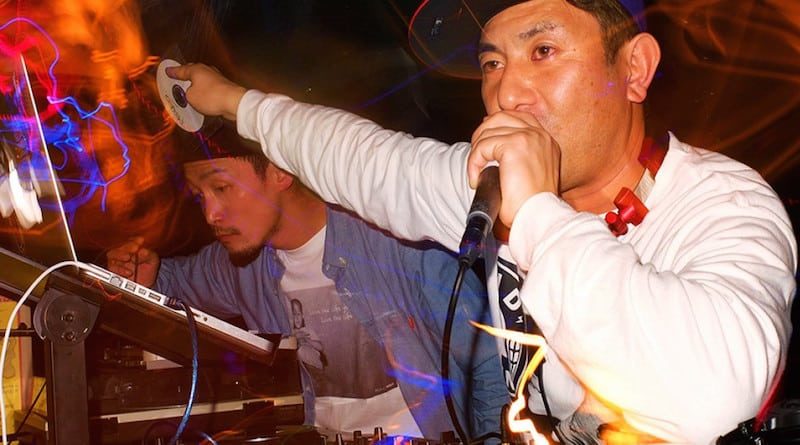Reggae In Hiroshima
Reggae probably isn’t the first thing that comes to mind when you think of Hiroshima, but the posters and flyers for reggae events you may see around town are testament to an active scene. Judith Cotelle spent some time checking out the local roots reggae, dancehall and dub sound systems, the people behind them and the events they promote. She found a closely knit community bound by love of music and passionate about getting it heard.
Hiroshima has hosted many high profile reggae artists, including some of such legendary status as Lee Scratch Perry, Jah Shaka, Horace Andy and Yellowman. But there are also many homegrown sound systems, selectors and promoters. Here, I introduce representatives of three styles of reggae – roots, dancehall and dub – all active in Hiroshima since the 1990s.
BIG STONE
We start at the beginning with Hiroshima reggae originals, respected and loved by all, BIG STONE.
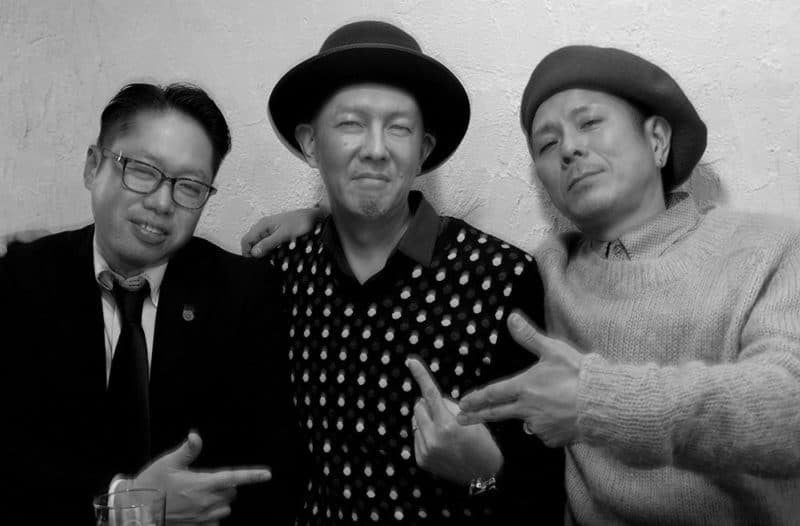
BIG STONE first met back in 1992 in a Namiki-dori club run by a Buddhist priest. That might raise an eyebrow, but reggae in Japan is a real monastic enterprise; in France they make booze, in Japan they spin platters! Borrowing the owner’s name, Oishi (大石 or “big stone”), they started with 7 members under the name Papa Big Stone Lab. Carting a small but powerful sound system down the stairs to Bar Edge once a month, they would build a nice musical wave record by record through the night, until dawn.
23 years of sharing their love of reggae. That’s a long time, I ask, Have you always got along?”
“Yes, 23 years without any quarrel!” says Conquer D. People find that hard to believe says Dr Pain. Pincher D goes on to explain, “Everyone in the scene gets along well. Hiroshima is somewhat unique in that there is no rivalry between the different sound systems. Everybody supports and appreciates each other.”
So how did a punk florist, a metalhead buddhist priest and a skater deep into ska culture find their way to reggae?
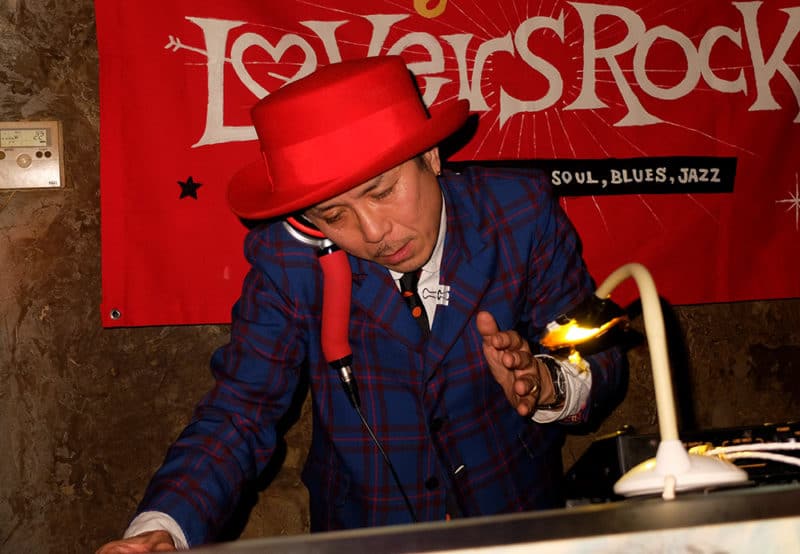
Selector and MC, Pincher D, who spends his days running Mikawa-cho flower shop GORGON, started DJing when he was about 23 years old after returning from a trip to London where he immersed himself in the London punk scene. “DJ culture was quite new in provinces, and you’d hear all kinds of genres at parties that pulled in big crowds. Very exciting times! My first encounter with reggae beyond Bob Marley, was watching The Harder They Come starring Jimmy Cliff. I liked the punk and rude boy style of his character. From then, reggae became a passion that has never left me. I love the contrast between tough or sad lyrics and the laid back rhythms.”

Dr Pain is the head priest of a Buddhist temple in Hiroshima. Tiring of the commercial direction that 1980s heavy metal was going while finishing his Buddhist studies, he got hooked on reggae after being introduced to its various styles at bar Rub-a-Dub in Kyoto. On his return to Hiroshima he sought out a reggae club his classmate, who happened to be Mr Oishi, had opened and became a resident DJ. Of his moniker he says, “I chose “Pain” because the origins of black music are the blues and jazz, music that tells of people’s sufferings.”
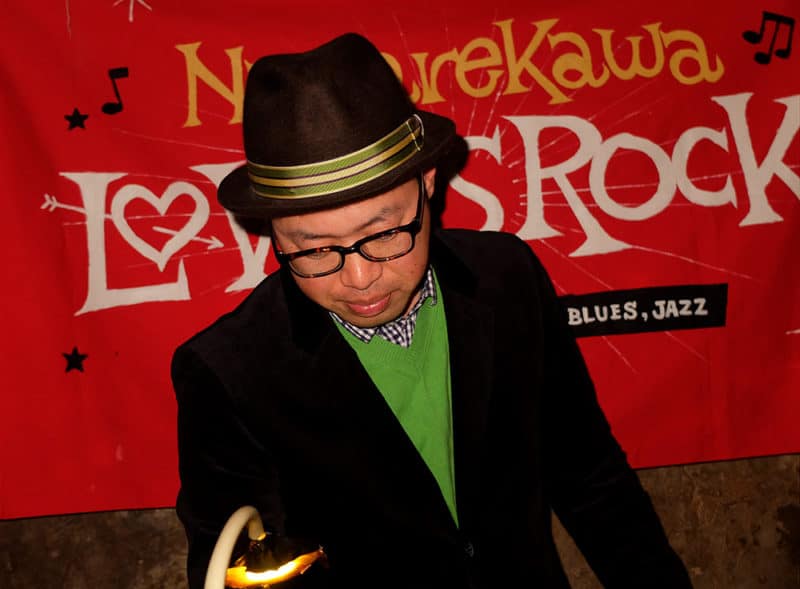
Conquer D, named for the Delroy Wilson song Conquer Me, came from the skate scene and was deep into ska music from an early age. Again, Oishi’s club was pivotal. “I was working in a skate shop and Oisihi would provide the speakers for our events at the skate park. He gave me a job as a bartender and I started to play records occasionally. That’s how I met Pincher D and Dr. Pain.”
Big Stone don’t limit themselves to just reggae. Their Sugar & Spice parties, inspired by Sunday night parties they attended in the Rae Town neighborhood in Kingston, Jamaica.
“The selectors play soul music, oldies and mellow tunes with a few reggae tunes thrown in. We wanted to bring that atmosphere back to Hiroshima,” says Dr Pain. Sugar & Spice is held at Centre Point on the 4th Sunday of every 2nd month 7pm to 12am, a place they think really suits this kind of mood.
On their dubplate buying trips to Jamaica, Conquer D says that although the first visit was a bit of culture shock, “People are really friendly, laid back, and I didn’t find it as dangerous as people say. I have excellent memories of trips there”. “Of course,” he goes on, “We are there to buy dubplates and they want to get the highest price possible, so it takes some negotiation.”
“One time, a guy in a studio started to play with a knife while staring at me. I struck some silly samurai poses and made like I was swinging a sword. He burst out laughing and gave me a high five.”
When I ask them about their dapper style, Pincher D says, “Well, I haven’t always dressed up the way do now. I even used to have dreadlocks, but before going to Jamaica my wife said I’d look ridiculous! I play a lot of early 80s reggae and a lot of those guys used to really dress up in a kind of chic mafia style, so it started from there, but gradually I created my own style.”
“Don’t get us wrong,” laughs Dr Pain, “We don’t call each other up before going out to know what the others are going to wear. But it usually matches.”
Doggy-T (Progress)
PROGRESS formed in 1994. Two of the original members eight members remain: Founder Doggy-T and Key Rock. More influenced by artists like Sizzla or labels like Jammy’s, the atmosphere and audience at a Progress event is quite different from a Big Stone party. They’ve invited many big reggae stars such as Buju Banton, Terry Linen and David Rodigan to play over heavyweight sound system built from scratch.
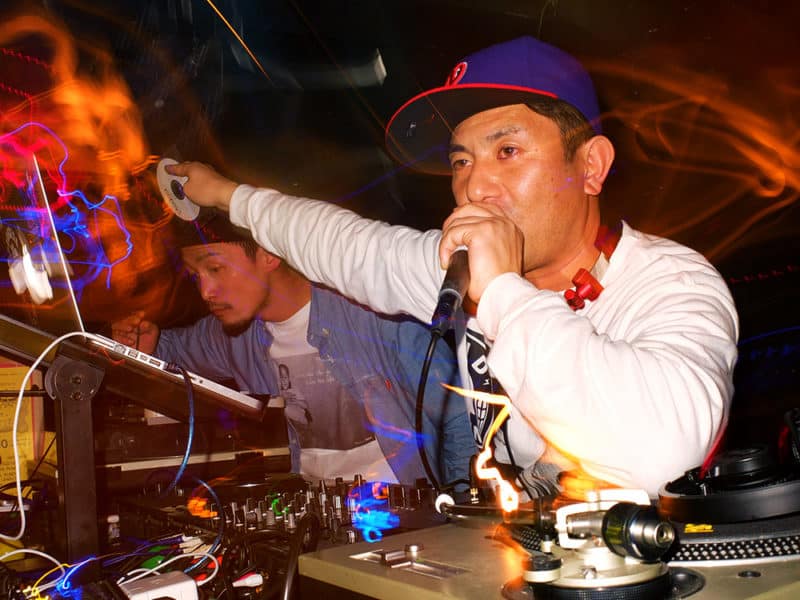
Doggy-T is also resident DJ of Easy Skanking Tuesdays at Centre Point and often plays outside Hiroshima in places such as Okayama, Osaka, Kyushu.
“Some older friends introduced me to reggae when I was 18. It was the first music to really move me. I would go to Big Stone events, and they have been a major influence. I learnt a lot from them and inspired me to create my own sound system. At the beginning we thought we’d progress little by little and we’d find a name later. Eventually we kept the name Progress as it suited our approach.”
In the early days, we had to create a local dancehall scene ourselves. Then the boom came, peaking in around 2006. Things have slowed since then, but the more invested ones are still here. People like Big Stone for whom I have huge respect or Dribbla from the younger generation. Reggae has become “normal”, music for masses. These days, nobody is surprised to hear reggae in a cafe, restaurant or a shop whereas it was totally unknown at the beginning.”
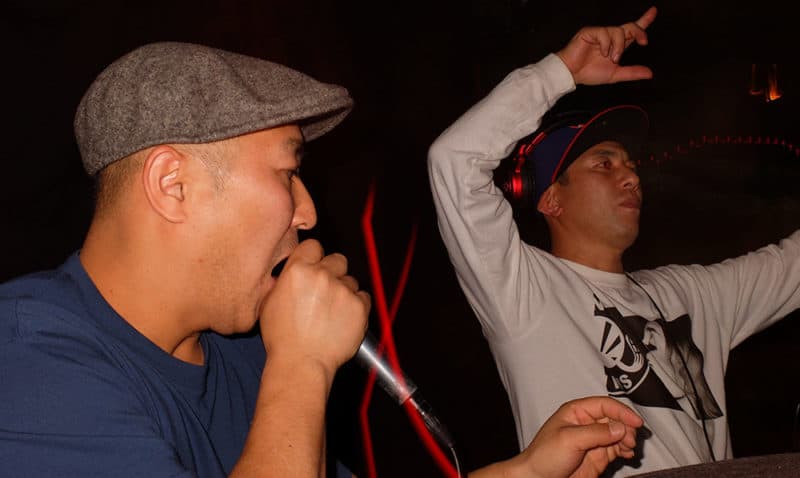
On reggae’s stronghold in Japan, he has no hesitation.
“Osaka! I think Osaka and Jamaica have a lot in common. You can feel the same kind of energy, Kansai dialect is a bit to Japanese what Jamaican Patois is to English. People from Osaka are quite unique; always hustling, but in a laid back way. They are open and talk easily to strangers. They remind me a bit of Jamaicans.”
Doggy-T has also made several trips to Jamaica and has made dubplates featuring big names like Sizzla and Ninjaman. He says prices range from a hundred to a couple of thousand US dollars. “Some artists like Super Cat, Jimmy Cliff, Bitty McLean refuse to record dubplates, but sometimes make exceptions… It doesn’t always depend on the amount of cash.”
“They’re always late… One day in Jamaica we were supposed to record with two artists together. One came on time, but the other was over than half an hour late. When he finally showed up, the first one went back to his place for more than half an hour, just to piss off the other guy!”
The soundclash is another important part of reggae culture. Sound systems play one after the others, for shorter and shorter lengths of time until they go song on song. ”We see how the audience react, which sound system makes the people shout more and create the most exciting atmosphere. But we don’t only fight with music. It’s also a verbal contest, we have to intimidate the opposition. Sound systems get eliminated until only the winner, decided by the audience, remains. I’ve never won a sound clash, but I like the atmosphere and getting feedback from the audience and other participants.”
Interestingly, sound clash world champions are the Japanese Mighty Crown. Japan has also come out on top In another arena too. Junko Kudo was the first non-Jamaican dancer to be crowned “Dancehall Queen” back in 2002.
Jah93
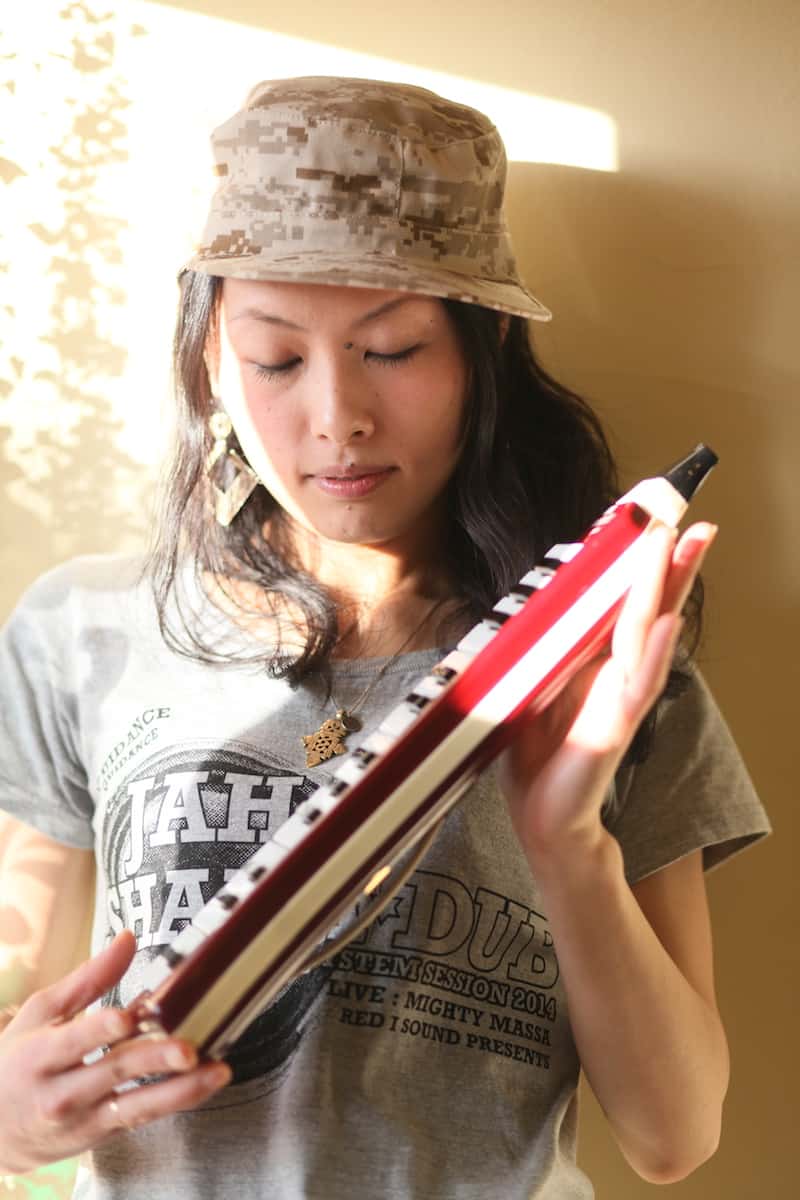
Dub evangelist Kumi Yasuda aka Jah93 (9 and 3 can be read “ku” and “mi” in Japanese) is a real roll-up-your sleeves daredevil. “Ah, there’s a hole in the knee. I fell off my bike on the way here,” she says matter of factly, as we sit down in Kugrass Shisha Cafe. Her hand is also has a small scar, this from an incident with a soldering iron while working on the a sound system. “That’s me all over”, she laughs.
Jah93’s had played with an African percussion band in her teens and listened to a bit of ska and reggae, but her dub epiphany came when she encountered Fukuoka’s Red I Soundsystem.
“It was like an electric shock! Dub is a music you need to experience live. It’s a physical experience. But it also has history, culture, a message. From whatever angle you approach it, this music is amazing. It’s addictive. I’ve even heard it’s good for your health!”
Beginning as a selector with the Jah Love Is Sweeter Sound System, she soon started tinkering with sound system equipment. The melodica (she owns four) followed, and Jah93 currently plays with local band Dub Zombies, as well as solo.
Rather than other musician and bands, she says, her inspiration comes from the sounds around her. She grabs a beer bottle and taps the table. “This sound, for instance, gives me ideas. The wind in the trees too. These kinds of sounds inspire me, along with the groove of the track.”
Social media has aided collaboration with kindred spirits far and wide. A new project involves Mexican singer Sis Zari who got in touch via Facebook. Chazbo, head of the UK Roots Temple imprint reached out via MySpace (remember that?). He’d send over tracks and she’d send back melodica and synth parts, mostly for fun. “My English is quite limited, but it doesn’t matter. Our conversations are more musical than verbal.” These conversations resulted in Jah93’s first 7 inch single, Silent Prayer, followed recently by Star & Moon on vinyl 10 inch.
“Like I said, dub is music you really need to feel with your whole body!”
Selecters play facing their imported preamp, handcrafted by JTS Studio in the UK, covered with buttons and spurting cables which control effects like sirens, delay etc. This means that, most of the time, they have their backs to the audience. It’s something that harks back to the 80s and people like dub reggae legend Jah Shaka.

“To my mind, we are actually playing in phase with the audience, in phase with them and facing a portrait of Haile Selassie. I find it easier to focus on what I’m doing, on the preamp and on my records. Plus, I feel lifted by the vibrations coming from the back. It gives me a lot of energy.”
Jah93 goes on to say that although they respect and follow the traditions of dub culture, we are not stuck in them.
“We try and also bring some innovation and are looking to the future. At the beginning the scene was tiny, with maybe 3 or 4 sound systems in all of Japan. It is still a small scene, but it continues to grow little by little with newcomers and people from other styles of reggae becoming interested in dub, and the quality is improving.”
This is an edited version of a much longer, highly visual exploration of Hiroshima’s reggae scene, published in French by Judith Cotelle on her site www.jud-hiroshima.com. This vesrion originally appeared in the spring 2015 issue of the GetHiroshima Mag.


